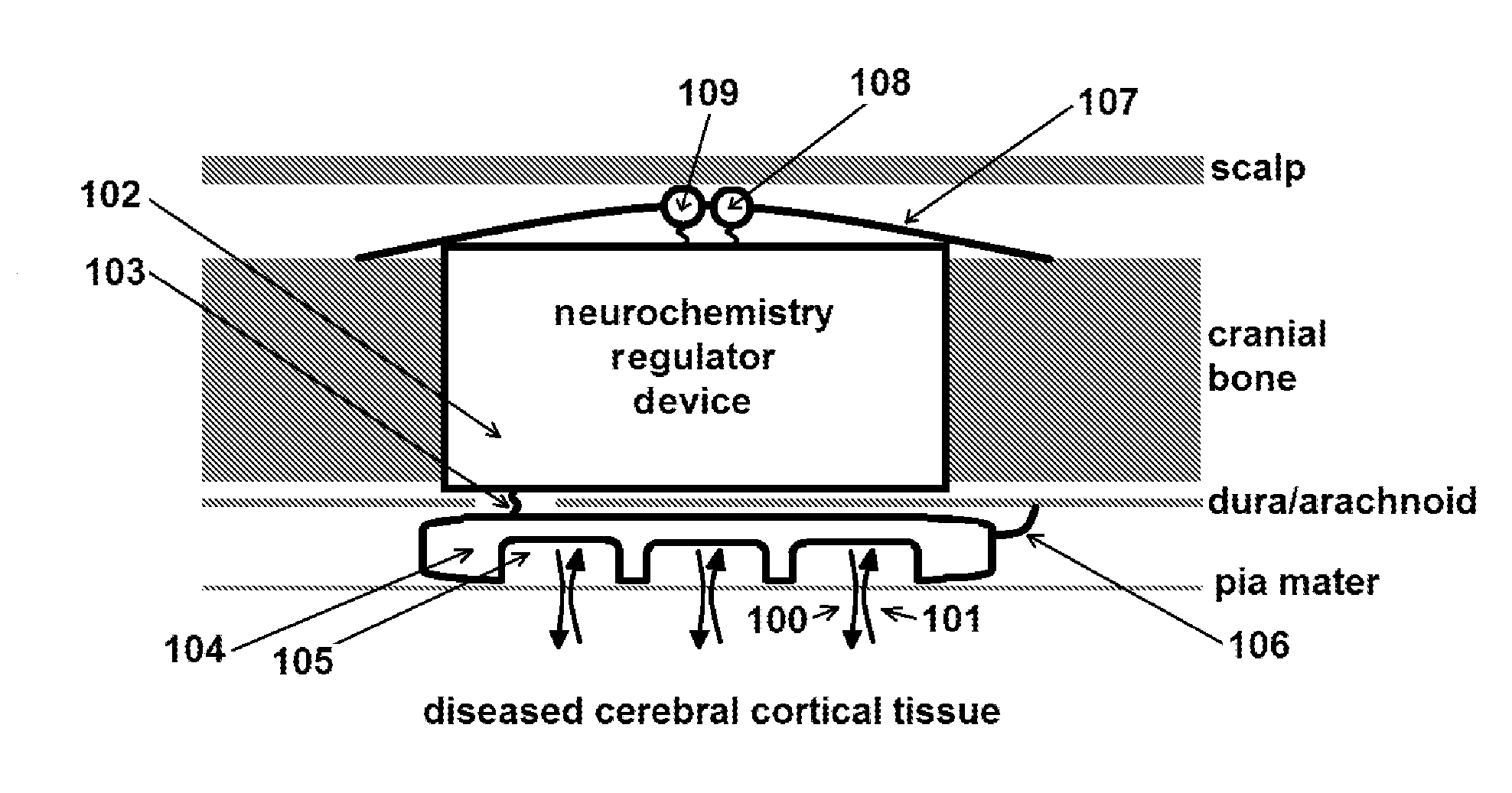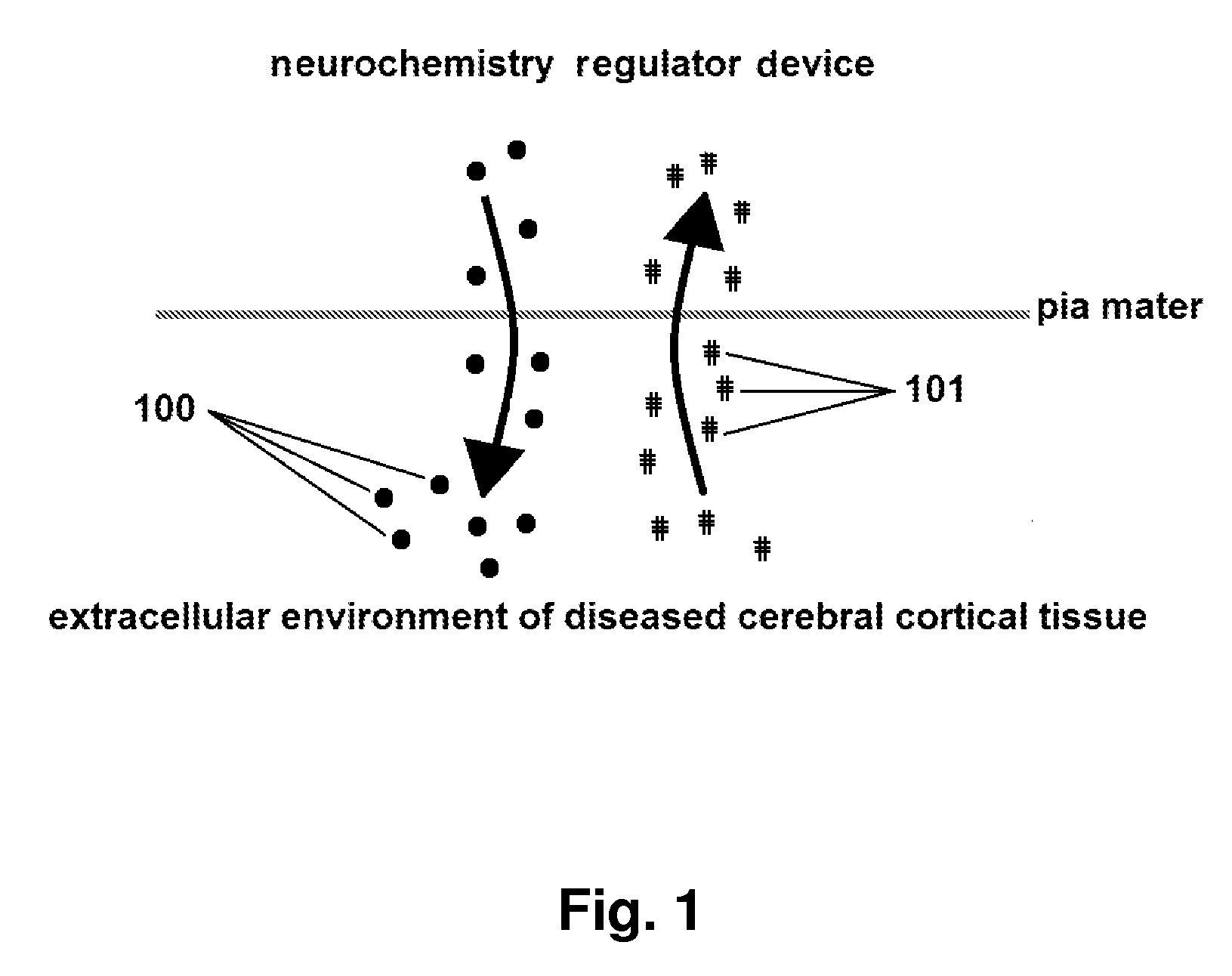Apparatus and use of a neurochemisrty regulator device insertable in the cranium for the treatment of cerebral cortical disorders
a neurochemisrty and regulator device technology, applied in the field of neurological disorders treated with implanted devices, can solve the problems of inability of intracranial shunts, intra- or extraventricular drains, other fluid removal devices to modulate neurochemistry, and current medical treatments for cerebral cortical disorders, and achieve the effect of preventing inflammatory tissue reactions
- Summary
- Abstract
- Description
- Claims
- Application Information
AI Technical Summary
Benefits of technology
Problems solved by technology
Method used
Image
Examples
Embodiment Construction
[0016]The following description and related appended drawings, wherein like elements are provided with the same reference numerals, further explains the present invention. The present invention fully utilizes the scientific principle of bi-directional molecule diffusion across the cerebral cortical pia mater according to Fick's laws of diffusion, allowing both drainage of potentially toxic molecules from the cortical extracellular / interstitial space into the overlying subarachnoid compartment and penetration of drug molecules from the subarachnoid space into the underlying cortical extracellular / interstitial space, as also demonstrated experimentally in vivo (Wang et al., 1983; Ludvig et al., 2012a). FIG. 1 illustrates this principle and its relation to the present invention by showing the opposite directions of movement of drug molecules 100 from the neurochemistry regulator device into the diseased cortex through the pia mater and exit of the potentially toxic cortical extracellul...
PUM
 Login to View More
Login to View More Abstract
Description
Claims
Application Information
 Login to View More
Login to View More - R&D
- Intellectual Property
- Life Sciences
- Materials
- Tech Scout
- Unparalleled Data Quality
- Higher Quality Content
- 60% Fewer Hallucinations
Browse by: Latest US Patents, China's latest patents, Technical Efficacy Thesaurus, Application Domain, Technology Topic, Popular Technical Reports.
© 2025 PatSnap. All rights reserved.Legal|Privacy policy|Modern Slavery Act Transparency Statement|Sitemap|About US| Contact US: help@patsnap.com



